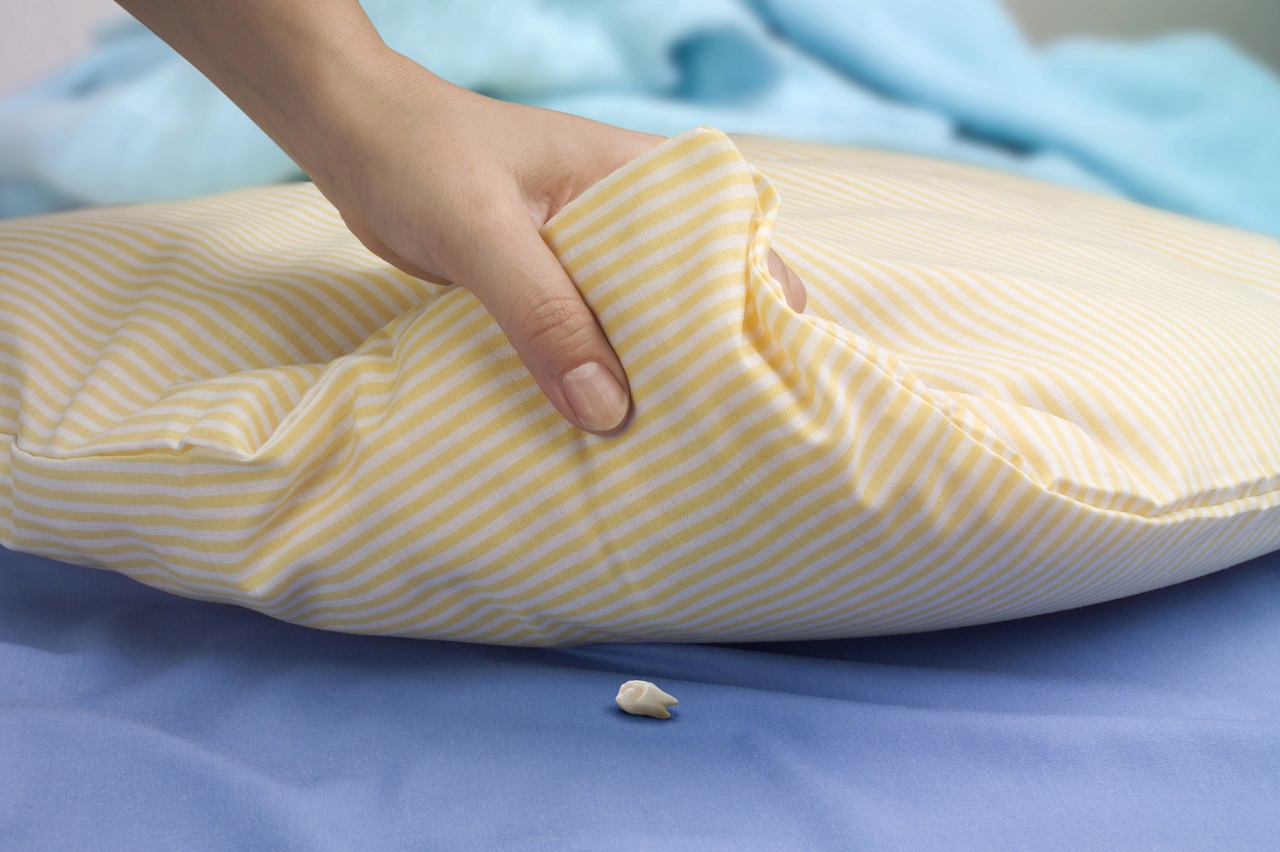How Much Money Does the Tooth Fairy Leave at Your House?
Tips for parents on how much to give without going overboard.


February 28 is National Tooth Fairy Day, and according to a new poll, lost baby teeth are taking a bigger bite than ever out of parents’ wallets. The Original Tooth Fairy Poll, sponsored by Delta Dental Plans Association, found that the average gift per tooth was $4.36 in 2014, up sharply from $3.50 in 2013.
See Our Money Smart Kids Column: Teaching Kids to Save
But wait. A poll released last year by Visa found that children in the U.S. were receiving an average of just $3.40 per lost tooth in 2014 -- down from $3.70 per tooth in 2013. Why the gap between the two tooth surveys? Maybe the fairy was overcome by a rush of generosity in the months between the two polls. Or maybe she suffers from a faulty memory. In the Visa survey, for example, fathers reported that the tooth fairy had left an average of $4.20, but mothers said it was more like $2.90.
How much to give. The numbers may be squishy, but it’s clear that the tooth fairy is still a popular fixture among American families. In the Delta Dental poll, she visited 81% of U.S. homes with children who lost a tooth.

Sign up for Kiplinger’s Free E-Newsletters
Profit and prosper with the best of expert advice on investing, taxes, retirement, personal finance and more - straight to your e-mail.
Profit and prosper with the best of expert advice - straight to your e-mail.
And it appears that the amount she leaves largely depends on what Mom and Dad have on hand. In the Delta Dental survey, 44% of those interviewed said the amount of spare cash they had determined the size of the gift. The Visa survey also concluded that the fairy may be giving just what she has in her pocket; more than half of kids could expect $1 or $5. And common sense still reigns: 33% of Visa respondents reported that the tooth fairy left $1, which I think is plenty.
Aside from satisfying parents’ curiosity, the surveys serve their own purposes. The Original Tooth Fairy Poll is intended to help promote good dental hygiene. (In some families, the fairy also leaves toothpaste, a toothbrush or dental floss.)
For Visa, the tooth fairy’s visit "is an opportunity for parents to talk to their children about the importance of saving and budgeting," says Jason Alderman, Visa’s vice-president of global financial education. Visa even offers a free tooth fairy calculator on Facebook (and as an app on Apple devices) that shows how much the tooth fairy is leaving in households similar to yours.
Be creative. Remember, though, that the point isn’t to enrich your child, but to continue a popular custom and mark a special occasion. So don't go overboard and consider using a little creativity.
One of my Kiplinger colleagues gives his 8-year-old a dollar bill per tooth because it's convenient -- and to ensure that jingling coins won't wake up his light-sleeping son, who also gets a certificate describing the lost tooth and showing the date. To make it special, you could give a dollar coin or a crisp new bill. On my shelf at work, I have a little silver box in which children can store their lost teeth for posterity. (At Barnesandnoble.com and Amazon.com, you’ll find a vast library of tooth fairy books and products.)
One dad's experience. Over the years of writing this column, I’ve collected many tales from parents about how the tooth fairy operates. One of my favorites comes from a father named Bob:
"When my oldest son was 4, he asked if I would ask the tooth fairy to give him a quarter and let him keep the tooth. I told him that we would leave a note and the tooth fairy might grant his wish. Sure enough, he got a quarter and got to keep the tooth.
"A couple of months later, he lost another tooth in the yard while playing in the snow. His younger brother told him that since he didn't have the tooth to put under the pillow, he would get no money. The older boy smiled and said that it wouldn't be a problem. He could substitute the first tooth and the tooth fairy wouldn’t know the difference.
"The next morning, the tooth was gone, and there was a shiny new quarter. The tooth fairy also left a note saying that the tooth looked suspiciously like a previous tooth and she would be watching the next time."
Get Kiplinger Today newsletter — free
Profit and prosper with the best of Kiplinger's advice on investing, taxes, retirement, personal finance and much more. Delivered daily. Enter your email in the box and click Sign Me Up.

Janet Bodnar is editor-at-large of Kiplinger's Personal Finance, a position she assumed after retiring as editor of the magazine after eight years at the helm. She is a nationally recognized expert on the subjects of women and money, children's and family finances, and financial literacy. She is the author of two books, Money Smart Women and Raising Money Smart Kids. As editor-at-large, she writes two popular columns for Kiplinger, "Money Smart Women" and "Living in Retirement." Bodnar is a graduate of St. Bonaventure University and is a member of its Board of Trustees. She received her master's degree from Columbia University, where she was also a Knight-Bagehot Fellow in Business and Economics Journalism.
-
 Americans Are Retiring Later: Will This Trend Last?
Americans Are Retiring Later: Will This Trend Last?Given a host of pressures to keep working, Americans are retiring later in life. Will regulatory and economic forces encourage you to work longer?
By Christy Bieber
-
 Trump’s Tax Cut Risks Your SNAP, Medicaid Benefits
Trump’s Tax Cut Risks Your SNAP, Medicaid BenefitsTax Cuts The GOP budget blueprint could slash lifesaving programs for millions of U.S. households.
By Gabriella Cruz-Martínez
-
 How to Motivate Kids to Save
How to Motivate Kids to Savepersonal finance It's not easy teaching your child to save. Here are some ways readers have incentivized their kids to keep track of their finances.
By Janet Bodnar
-
 Lessons for Kids From the Crisis
Lessons for Kids From the Crisissavings One of the greatest opportunities presented by the pandemic is to give children an appreciation for the workings of the economy.
By Janet Bodnar
-
 Why Financial Education Works
Why Financial Education Workscollege Money skills learned young will pay off in the long run.
By Janet Bodnar
-
 The Tooth Fairy Is Leaving Less Under Pillows These Days
The Tooth Fairy Is Leaving Less Under Pillows These Dayssavings The average amount that the Tooth Fairy gives kids is down 10% from last year.
By Janet Bodnar
-
 The Value Test: 300 Colleges That Pass
The Value Test: 300 Colleges That PassCollege Rankings All the schools on our list, from 1 to 300, are best values.
By Janet Bodnar
-
 6 Ways to Get Your Kids to Do Chores Without Paying Them
6 Ways to Get Your Kids to Do Chores Without Paying Themspending Kids shouldn't be paid for doing routine tasks, but for doing extra jobs that parents define as above and beyond.
By Janet Bodnar
-
 Save $1 for College, Cut $2 in Debt
Save $1 for College, Cut $2 in Debtcollege Paying for college doesn't mean you have to take out thousands in student loans.
By Janet Bodnar
-
 Back-to-School Money Tips for College Students
Back-to-School Money Tips for College Studentscollege Kiplinger's summer 2015 interns offer advice on managing your finances as a student.
By Janet Bodnar